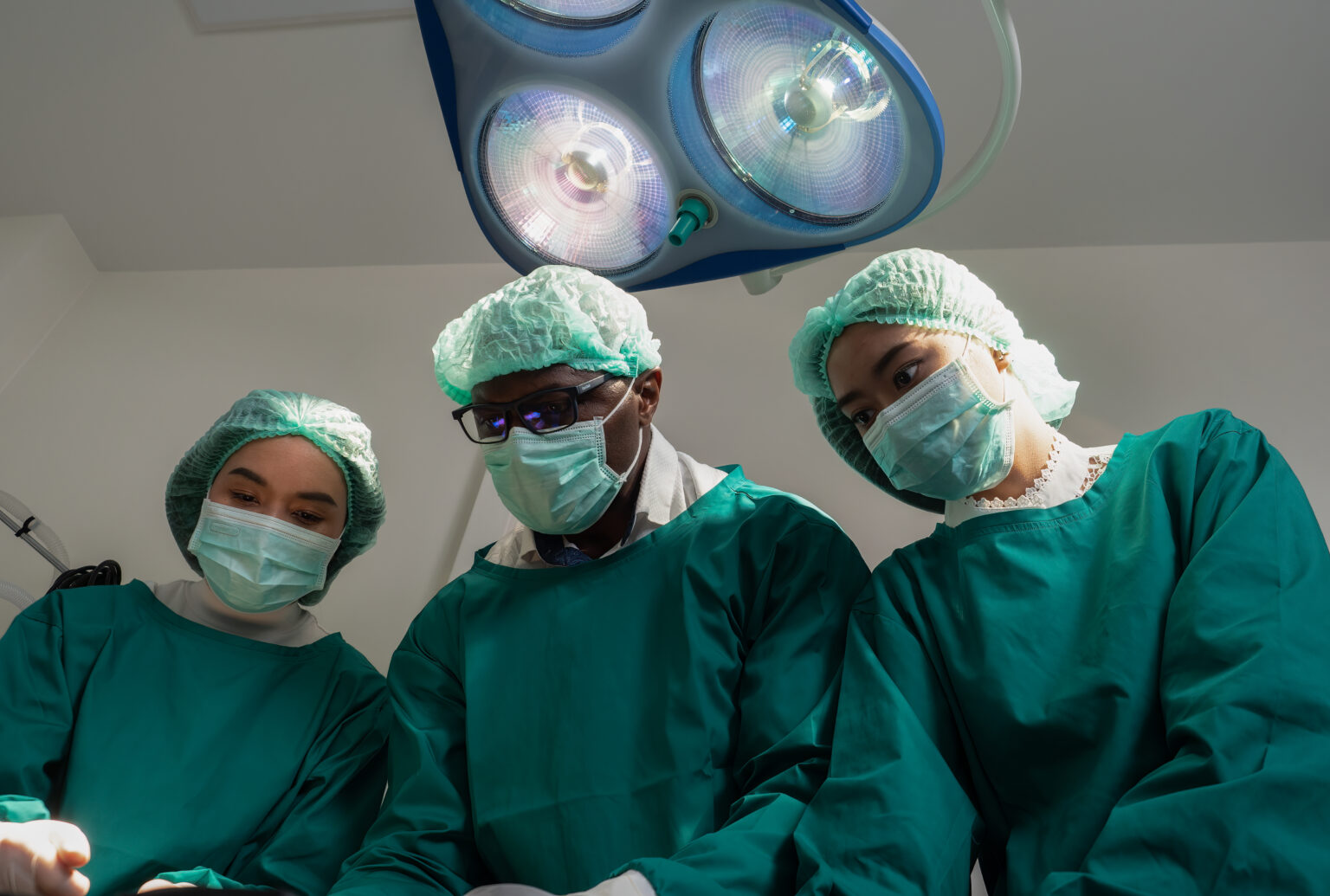
RADV Audits: When Small Errors Turn into Million-Dollar Headaches
In an ideal world, every diagnosis code you submit to the Centers for Medicare & Medicaid Services (CMS) would be backed by bulletproof documentation –

Federal contractors – Recovery Audit Contractors (RACs) and Unified Program Integrity Contractors (UPICs) – have increasingly targeted wound care claims, particularly involving expensive skin substitutes billed under Medicare Part B.
In 2023 alone, over $1.6 billion was spent on these products, prompting heightened audit activity from Qlarant, Novitas, and others. This intense scrutiny stems from concerns about clinical efficacy, appropriate use, and billing integrity.
Auditors frequently argue that skin grafts or tissue products lack medical necessity, based on Medicare’s definitions in CMS IOM 100‑08, Chapter 13, §13.5.1 and applicable Local Coverage Determinations (LCDs).
Common denial rationales include:
Still, experienced providers have successfully overturned denials, even for costly graft products, by carefully appealing UPIC and RAC decisions using regulation and case documentation citation.
A wound‑care provider audited by a UPIC was denied claims for a stage 4 sacral pressure ulcer, despite excellent documentation. The auditor asserted that the treatment exceeded 12 weeks. The provider appealed, showing that the first graft application began in March 2023 and ended in May, all within 12 weeks, even though wound care began months earlier.
The UPIC misread LCD language: the 12‑week limit applies only to graft applications, not total wound care duration. On appeal to the Medicare Administrative Contractor (MAC), documentation supported that medical necessity rules were correctly interpreted, and the claim was eventually reversed.
In another appeal, a UPIC denied graft claims, arguing the product was “not approved as a skin substitute,” but merely a dressing – even though the product appeared on a pending approved LCD list. At redetermination and Qualified Independent Contractor (QIC) levels, the provider showed that at the time of service, the product was on Medicare’s approved skin substitute list. The MAC agreed, and coverage was restored. This emphasizes the importance of quoting the exact LCD in effect at time of service.
Medicare IOM 100‑08, Chapter 13, §13.5.1 defines “reasonable and necessary,” emphasizing documentation of standard care failure and specific treatment rationale.
LCD L36690 (for cellular and tissue‑based products) requires documentation of at least four weeks of unsuccessful conservative care, patient condition specifics, and why a particular graft product was selected.
Many appeals hinge upon whether the provider tracked application count and duration, consistent with later‑effective LCD thresholds, even if the LCD later changed.
RAC appeals follow the five‑level appeal process (Redetermination, Reconsideration, ALJ hearing, MIC, and federal court) per the Providers’ Bill of Rights, with thresholds for amount in controversy at ALJ and judicial levels (often $1,500+ for ALJ).
Based on these case outcomes and regulatory analysis, here’s what successful providers do:
Conclusion
Skin substitute grafts can be medically necessary – even when highly expensive – if they are used within LCD guidelines, after failed conservative care, and with full documentation of patient outcomes and rationale. UPIC and RAC auditors frequently deny these claims based on misinterpretation of LCD language, insufficient documentation, or concerns over product coverage. But providers that carefully appeal – invoking specific regulatory provisions (IOM §13.5.1, LCD L36690), backed up by detailed wound‑care timelines and documentation – have definitively overturned denials and preserved reimbursement.


In an ideal world, every diagnosis code you submit to the Centers for Medicare & Medicaid Services (CMS) would be backed by bulletproof documentation –

In today’s rapidly evolving healthcare environment, coding audits have become a cornerstone of compliance and revenue integrity. The days of infrequent, retrospective reviews are behind
Please log in to your account to comment on this article.

Sepsis remains one of the most frequently denied and contested diagnoses, creating costly revenue loss and compliance risks. In this webcast, Angela Comfort, DBA, MBA, RHIA, CDIP, CCS, CCS-P, provides practical, real-world strategies to align documentation with coding guidelines, reconcile Sepsis-2 and Sepsis-3 definitions, and apply compliant queries. You’ll learn how to identify and address documentation gaps, strengthen provider engagement, and defend diagnoses against payer scrutiny—equipping you to protect reimbursement, improve SOI/ROM capture, and reduce audit vulnerability in this high-risk area.

Only ICD10monitor delivers what you need: updates on must-know changes associated with the FY26 IPPS, including new ICD-10-CM/PCS codes, CCs/MCCs, and MS-DRGs, plus insights, analysis and answers to your questions from two of the country’s most respected subject matter experts.

This third session in our 2026 IPPS Masterclass will feature a review of FY26 changes to the MS-DRG methodology and new technology add-on payments (NTAPs), presented by nationally recognized ICD-10 coding expert Christine Geiger, MA, RHIA, CCS, CRC, with bonus insights and analysis from Dr. James Kennedy.

This second session in our 2026 IPPS Masterclass will feature a review the FY26 changes to ICD-10-PCS codes. This information will be presented by nationally recognized ICD-10 coding expert Christine Geiger, MA, RHIA, CCS, CRC, with bonus insights and analysis from Dr. James Kennedy.

During this essential RACmonitor webcast Michael Calahan, PA, MBA Certified Compliance Officer, will clarify the rules, dispel common misconceptions, and equip you with practical strategies to code, document, and bill high-risk split/shared, incident-to & critical care E/M services with confidence. Don’t let audit risks or revenue losses catch your organization off guard — learn exactly what federal auditors are looking for and how to ensure your documentation and reporting stand up to scrutiny.

Learn how to navigate the proposed elimination of the Inpatient-Only list. Gain strategies to assess admission status, avoid denials, protect compliance, and address impacts across Medicare and non-Medicare payors. Essential insights for hospitals.

RACmonitor is proud to welcome back Dr. Ronald Hirsch, one of his most requested webcasts. In this highly anticipated session, Dr. Hirsch will break down the complex Two Midnight Rule Medicare regulations, translating them into clear, actionable guidance. He’ll walk you through the basics of the rule, offer expert interpretation, and apply the rule to real-world clinical scenarios—so you leave with greater clarity, confidence, and the tools to ensure compliance.

Bring your questions and join the conversation during this open forum series, live every Wednesday at 10 a.m. EST from June 11–July 30. Hosted by Chuck Buck, these fast-paced 30-minute sessions connect you directly with top healthcare experts tackling today’s most urgent compliance and policy issues.
Happy National Doctor’s Day! Learn how to get a complimentary webcast on ‘Decoding Social Admissions’ as a token of our heartfelt appreciation! Click here to learn more →
CYBER WEEK IS HERE! Don’t miss your chance to get 20% off now until Dec. 2 with code CYBER24